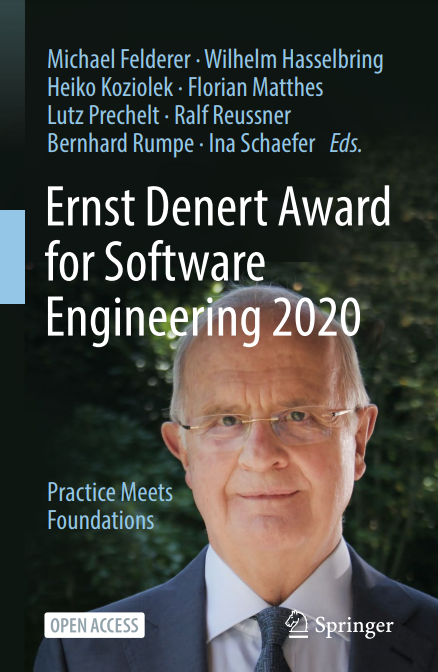Ernst Denert Award for Software Engineering 2020
Editorial: Springer Nature
Licencia: Creative Commons (by)
Autor(es): Felderer, Michael; [et al.]
This open access book provides an overview of the dissertations of the eleven nominees for the Ernst Denert Award for Software Engineering in 2020. The prize, kindly sponsored by the Gerlind & Ernst Denert Stiftung, is awarded for excellent work within the discipline of Software Engineering, which includes methods, tools and procedures for better and efficient development of high quality software. An essential requirement for the nominated work is its applicability and usability in industrial practice. The book contains eleven papers that describe the works by Jonathan Brachthäuser (EPFL Lausanne) entitled What You See Is What You Get: Practical Effect Handlers in Capability-Passing Style, Mojdeh Golagha's (Fortiss, Munich) thesis How to Effectively Reduce Failure Analysis Time?, Nikolay Harutyunyan's (FAU Erlangen-Nürnberg) work on Open Source Software Governance, Dominic Henze's (TU Munich) research about Dynamically Scalable Fog Architectures, Anne Hess's (Fraunhofer IESE, Kaiserslautern) work on Crossing Disciplinary Borders to Improve Requirements Communication, Istvan Koren's (RWTH Aachen U) thesis DevOpsUse: A Community-Oriented Methodology for Societal Software Engineering, Yannic Noller's (NU Singapore) work on Hybrid Differential Software Testing, Dominic Steinhofel's (TU Darmstadt) thesis entitled Ever Change a Running System: Structured Software Reengineering Using Automatically Proven-Correct Transformation Rules, Peter Wägemann's (FAU Erlangen-Nürnberg) work Static Worst-Case Analyses and Their Validation Techniques for Safety-Critical Systems, Michael von Wenckstern's (RWTH Aachen U) research on Improving the Model-Based Systems Engineering Process, and Franz Zieris's (FU Berlin) thesis on Understanding How Pair Programming Actually Works in Industry: Mechanisms, Patterns, and Dynamics - which actually won the award.
[Cham: 2022]
Compartir:
Una vez que el usuario haya visto al menos un documento, este fragmento será visible.


